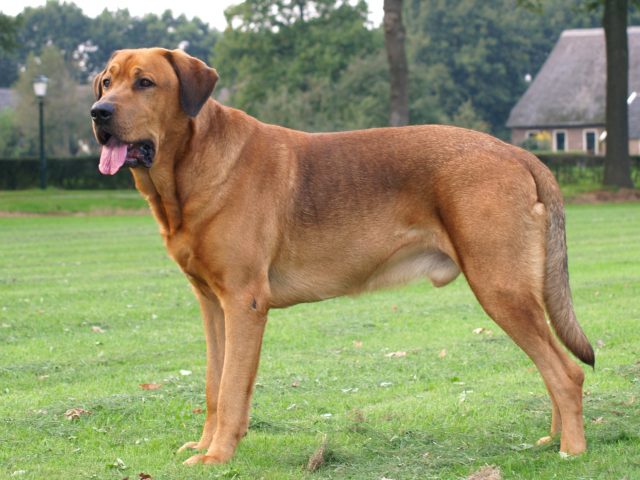Type the name of the breed you're looking for below
[wpdreams_ajaxsearchlite] Don't see the breed your're looking for? Click here and let us know!
Breed Characteristics
1 paw - breed exhibits the least amount of this characteristic
5 paws - breed exhibits most amount of this characteristic
Danish Broholmer
| Other Names | Danish mastiff, Broholmer |
| Country of Origin | Denmark |
| Weight | 87 - 176 lbs. (40 - 80 kg) |
| Height (at withers) | 22 - 30 in. (70 - 75 cm) |
| Coat | The coat is short and close lying, with a thick undercoat. |
| Colour | The coat comes in yellow with black mask, golden red and black. White markings on chest, feet and tip of tail are optional. |
| Litter Size | 6-10 puppies, Average is 8 |
| Life Span | 7 - 12 years |
| Origin & History | The Broholmer breed was generated from a cross between English Mastiffs and local dogs in Germany, and was named after Sehested of Broholm, a game-keeper who lived in the 18th century. During the Second World War, the Broholmer became a victim of the strife and almost went extinct, but was saved by a group of Danish enthusiasts after isolated members were found in the 1970s. King Frederick VII and his consort, Countess Danner were owners of several Broholmers and one of their portraits depicts them with one of their dogs. The breed was established in the early 19th century and was moderately popular, especially as a guard dog in the homes of wealthy Danes. The Breed was imported to the UK in 2009 with a view to being put on the UK kennel clubs import list. |
| Personality | Calm, good tempered, friendly, yet watchful, the owner of the Broholmer must show great self-confidence. The objective in training this dog is to achieve pack leader status. It is a natural instinct for a dog to have an order in their pack. When we humans live with dogs, we become their pack. The entire pack cooperates under a single leader; lines are clearly defined and rules are set. Because a dog communicates his displeasure with growling and eventually biting, all other humans MUST be higher up in the order than the dog. The humans must be the ones making the decisions, not the dogs. That is the only way your relationship with your dog can be a complete success. |
Care Requirements
| Health | There are no known breed-specific health concerns. |
| Grooming | Seasonal heavy shedder |
| Exercise | This breed needs a daily, long walk, where the dog is made to heel beside or behind the human holding the lead. Never in front. Like many other giant breeds it is important to remember that too much forced, vigorous exercise is not good for a young dog's growth and development, so watch your puppy for any signs, but it still instinctually needs a daily walk. |
| Other Considerations | While it can live in an apartment, it may perform better in a small yard. It is important for owners to make sure these dogs are given lots of space to move around in. |



